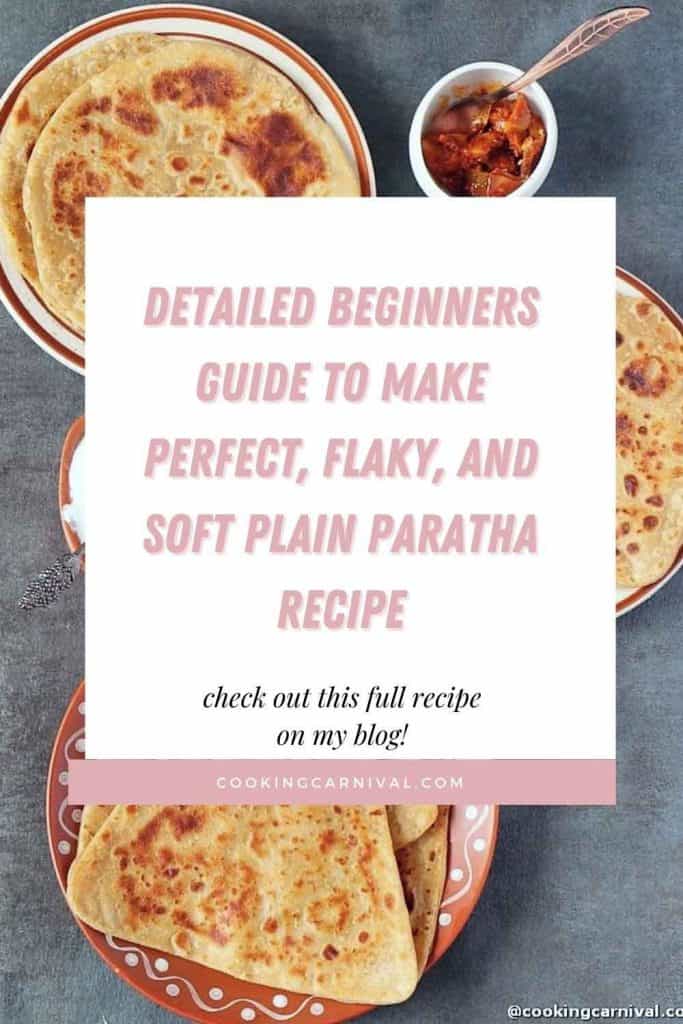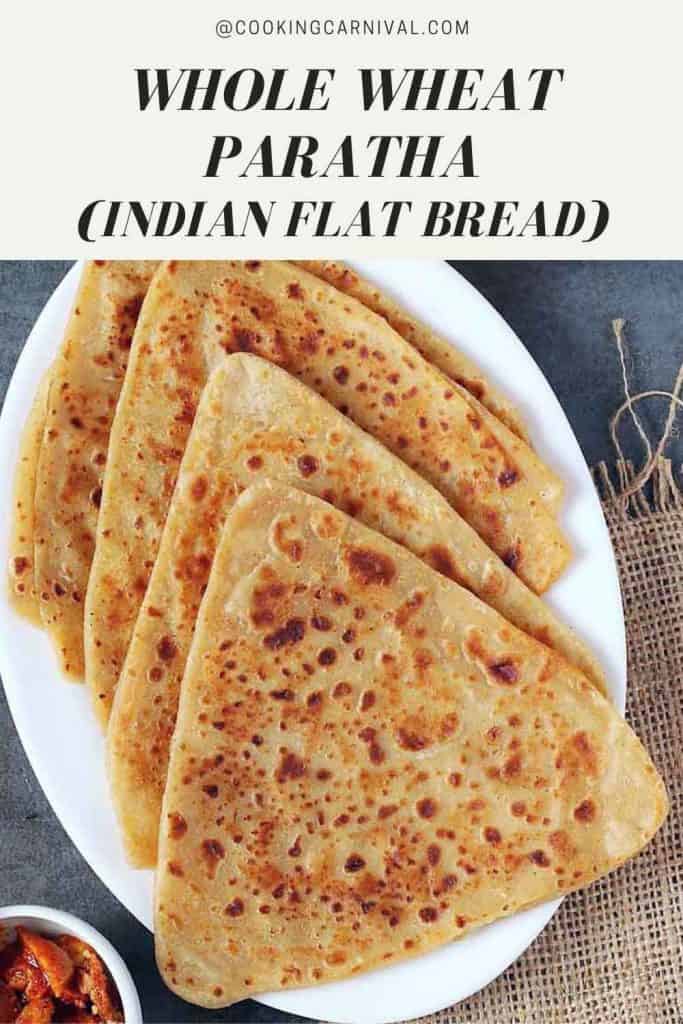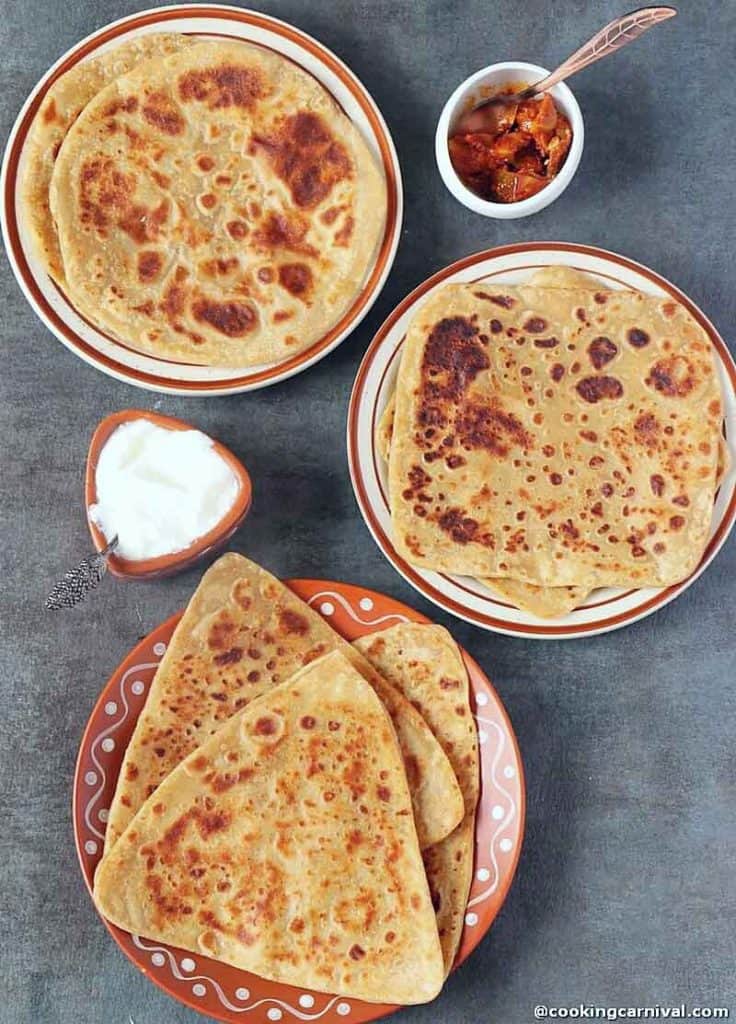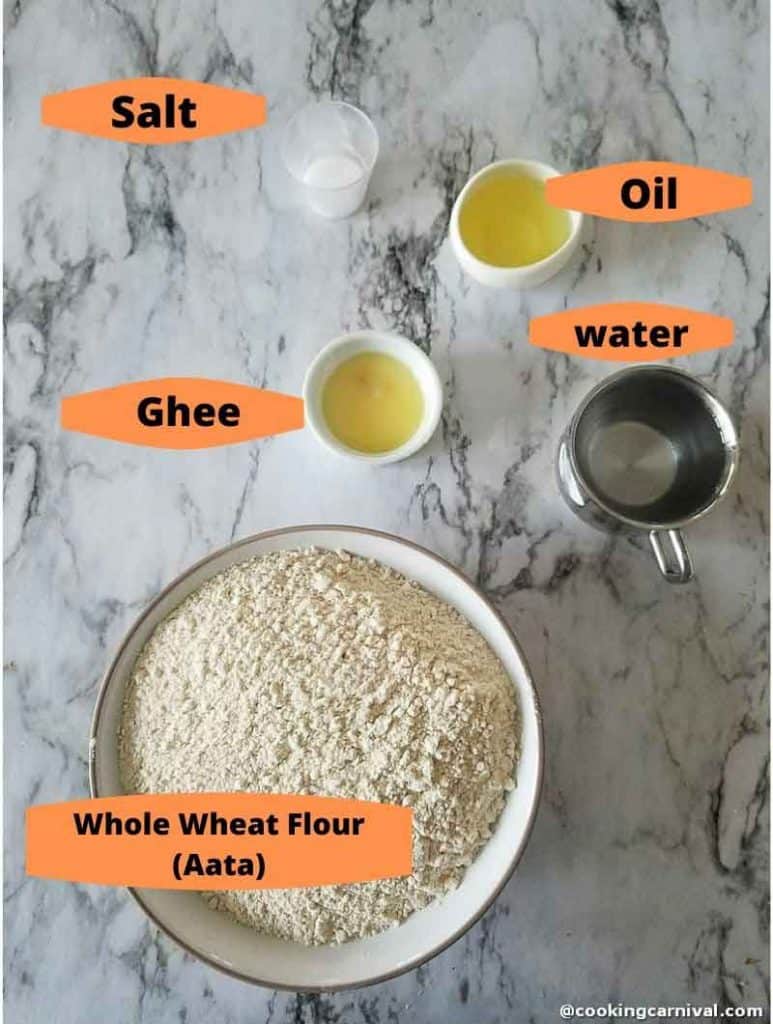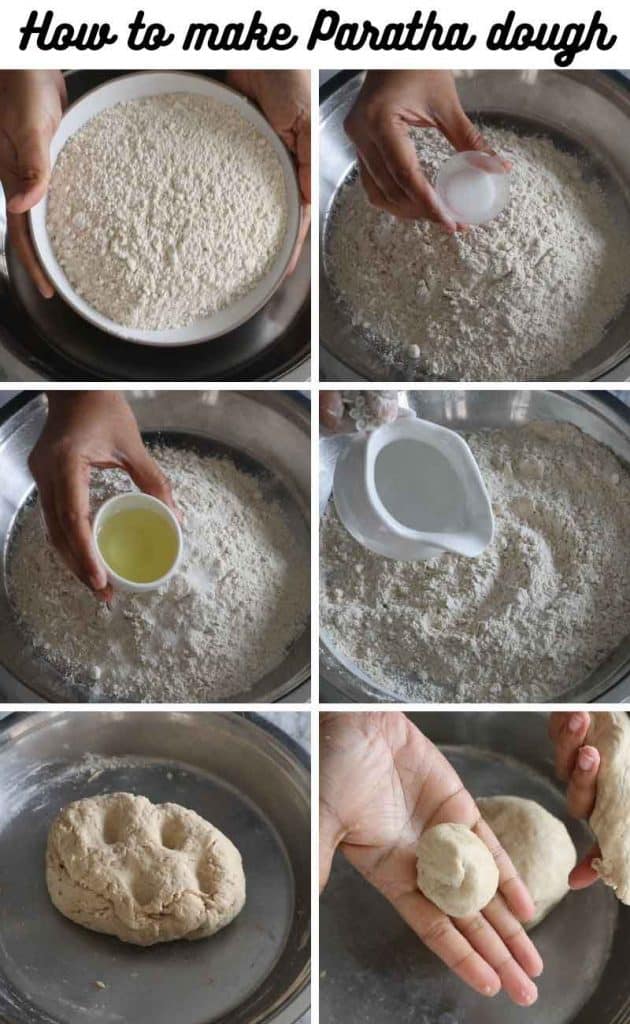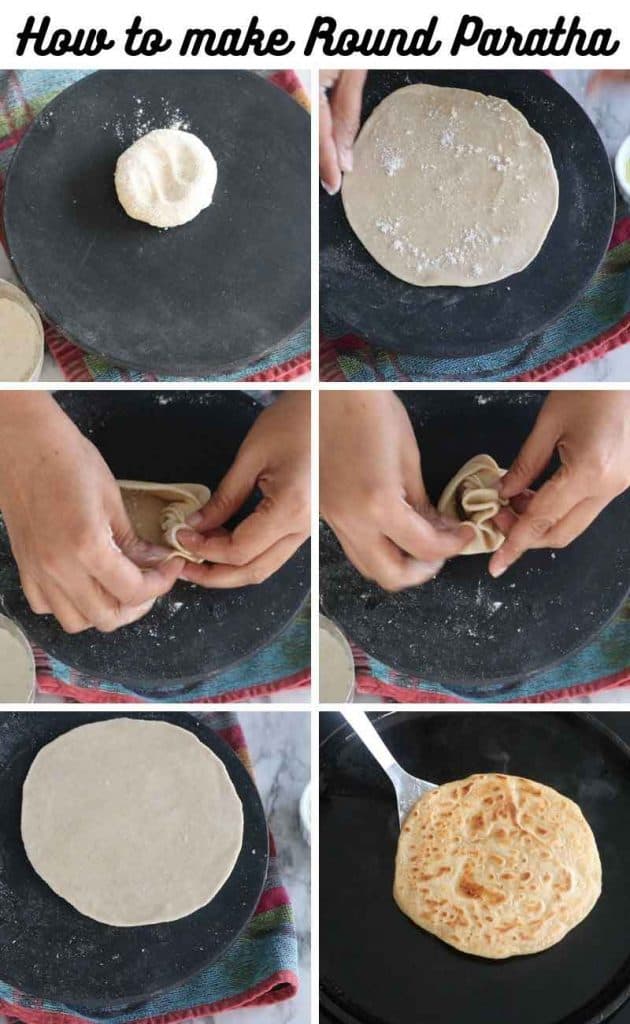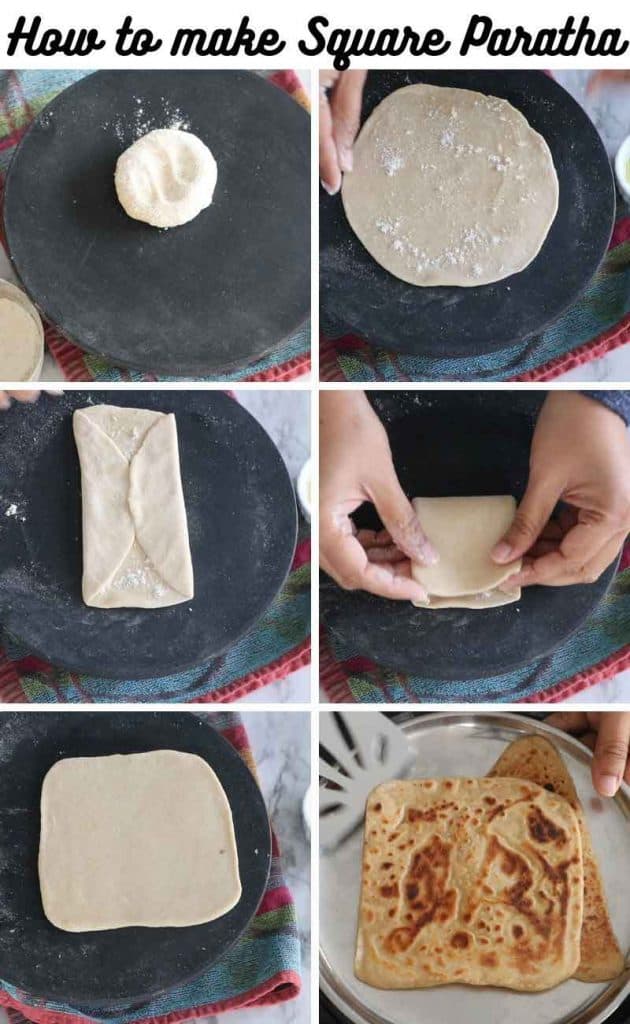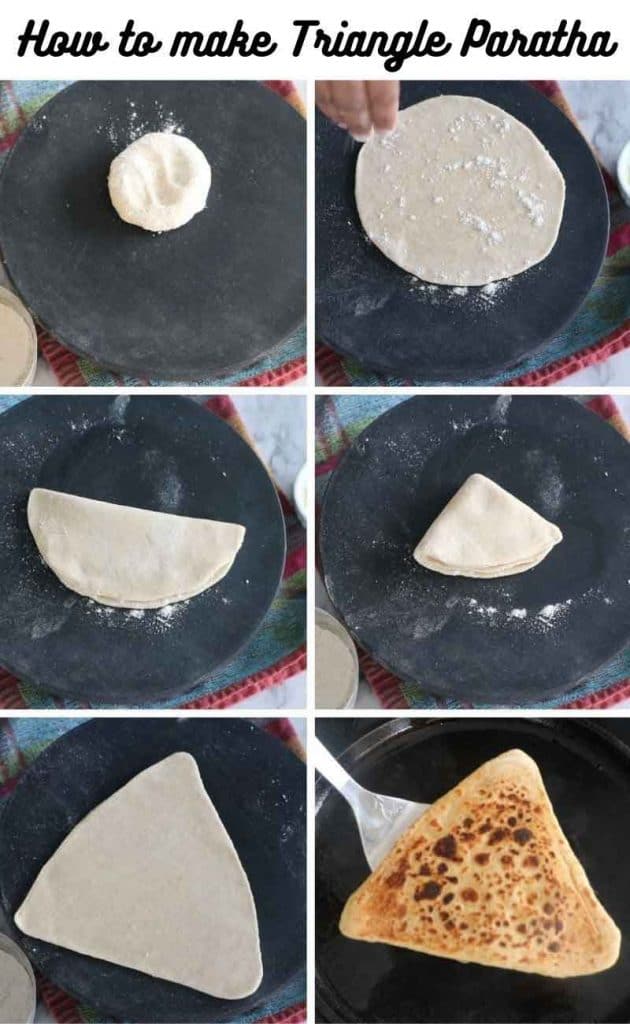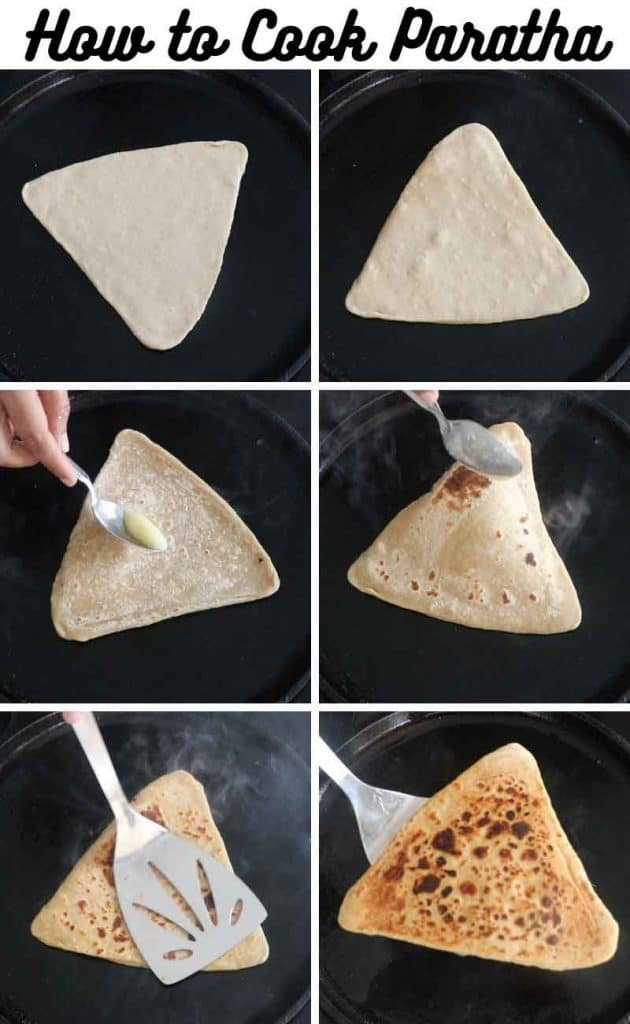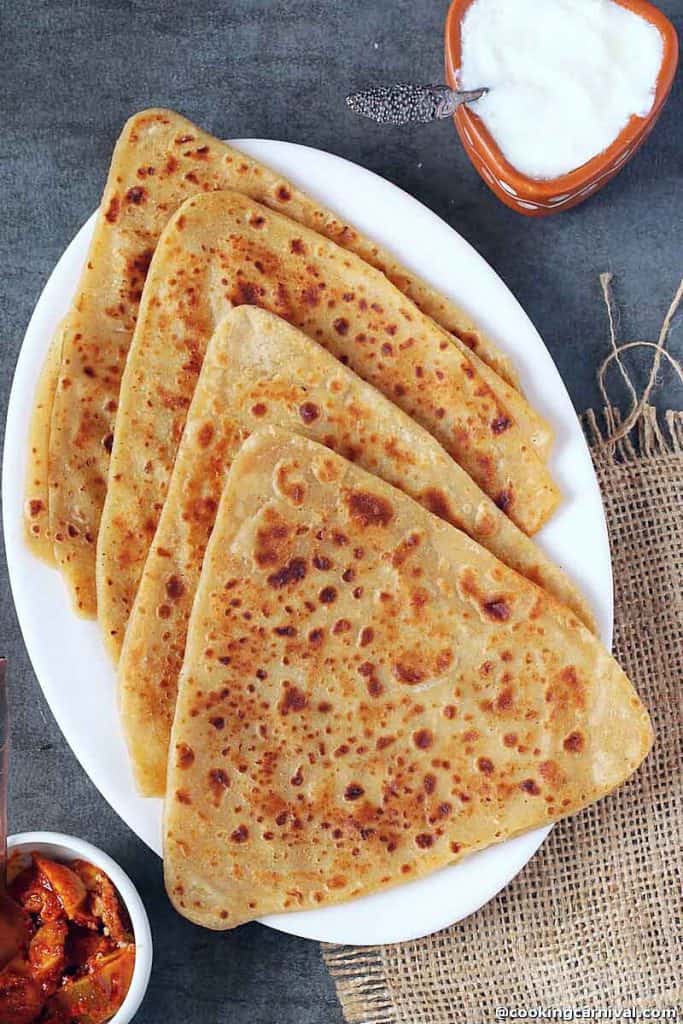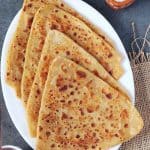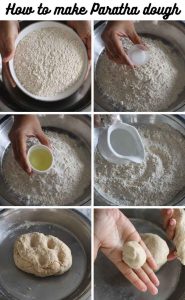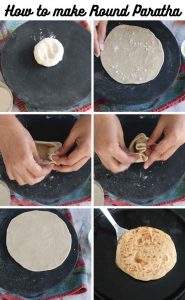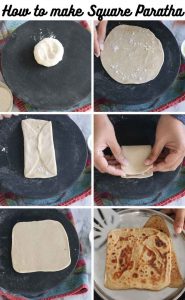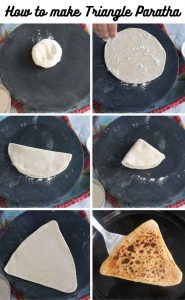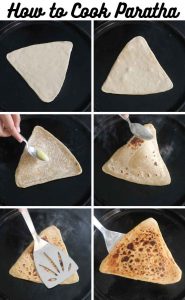The plain parathas, also known as Tawa Paratha is an Indian unleavened flatbread that can complement almost any dish and can be served with curry, pickle, raita, curd, pickle, chutney, or also make a great accompaniment with a hot cup of chai. In this recipe post, I will share step-by-step how to make plain parathas in 3 shapes – triangle, round, and square.
What are Parathas?
Parathas are staples to many Indian homes. They are soft, thin, and flaky flatbread that can be eaten for breakfast lunch, or dinner. Parathas are also great to pack in a Tiffin for lunch, especially for toddlers and kids. They keep soft for longer. There are many varieties of paratha like Aloo paratha, gobi paratha, mooli paratha, paneer paratha, etc. Today, I am sharing the Plain paratha recipe made with whole wheat (atta) with you all. Plain parathas are made with whole wheat flour that is kneaded using salt, oil, and water. The dough is then rolled into layered and cooked on a hot griddle/tawa with some ghee or oil until light golden brown spots appear on both sides. Your kitchen will fill with a wonderful aroma. This recipe can be multiplied as needed and made in advance, cooking up from frozen on demand. Although making them can be a bit of a time-consuming effort, the ingredients and techniques are simple enough that anyone can have freshly made flatbread at home.
What is the difference between Paratha, Naan, and Roti?
Paratha, naan, and roti are all different versions of Indian flatbread. They each have similar ingredients and all are easy to make. Naan is different from roti and paratha. It is made with all-purpose flour whereas roti and paratha (usually) are made with whole wheat flour. Naan uses yeast to provide a bit of rising to the dough. Whereas Roti and paratha don’t require yeast to rise the dough. Roti is a bit thinner than both naan and paratha. Paratha is the flakiest of the three variations of flatbread.
Ingredients needed
You will need
How to make plain paratha? Step by step process
Step – 1 Make the dough
In a large bowl, mix the flour, salt, and oil. Slowly add water, a little bit at a time, mixing with your hands until soft dough forms. Depending on the brand of the flour you may need more or less water so only add a little bit at a time. Once the dough is formed, allow resting for 10 to 20 minutes covered with damp kitchen. Divide the dough into 12 pieces and roll each piece on the palm of your hands into a round ball. Keep the balls covered all the time.
Step – 2 Rolling the dough
Here are 3 different ways to roll the paratha –
- Round Paratha
- Square paratha
- Triangle Paratha
Step – 3 Cook on the Tawa?
Preheat a nonstick or cast iron Tawa (griddle) on medium-high flame.Take the paratha. If there is too much flour on rolled paratha then dust off the excess flour by flipping the paratha between both your palms.Then Carefully transfer the paratha to the hot tawa.Cook until you start seeing small air pockets and the color of the dough starts to change.With a flat spatula, flip the paratha and apply some ghee (about ¼ teaspoon). Spread the ghee evenly over the paratha with the back of the spoon. Cook until there are some brown spots on the paratha.Flip the paratha and top with ghee on the other side. Spread it evenly over the surface. Cook until there are brown spots while pressing gently with the spatula.When both sides have golden brown spots, transfer the paratha to a plate.Follow the same step with the remaining parathas.Keep the parathas on a kitchen towel and store in a hot casserole or a Dabba until serving.
Parathas taste best served hot!
Notes and Pro-tips
Consistency of the dough – Knead the dough well, it should be not too hard and not too soft/sticky. If the dough gets too sticky, add a tablespoon of flour at a time and knead again till all the flour is absorbed and the dough is soft and easily rollable. If the dough gets too hard, it means less water was added. Add a tablespoon of water at a time and knead again. The dough should be soft enough that if you press your finger against the dough, it leaves an impression.Resting the dough – Let the dough rest covered with a damp cloth for 15-30 minutes, so the gluten is released and it becomes more pliable.Rolling the dough – Roll the dough with a soft hand and as evenly as possible to get the same thickness. It is the most important. A uniform shape looks good but is not required to make perfect soft and flaky parathas. If you are a beginner and learning to make paratha, use more dry flour while rolling the paratha. But always dust off any excess flour before cooking on the Tawa, otherwise, the dry flour can make the paratha dry.To get the perfect paratha, the edges of the parathas should be thinner than the center and the thickness should be approx 1 mm. Don’t roll it thin like roti.Making paratha needs lots of practice. So be patient and keep practicing.
More Indian flat bread recipes
Tandoori roti Palak paneer paratha Methi paratha Warm Regards, You can also FOLLOW me on FACEBOOK, INSTAGRAM, and PINTEREST for more fabulous recipes and updates. Subscribe to our YouTube Channel for tasty and easy video recipes. Dhwani.
